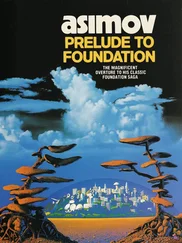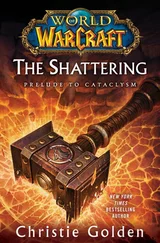Edward Llewellyn
PRELUDE TO CHAOS
The Atlantic rollers, lashed by the storm winds of the equinox, thundered onto the rocks below the Pen and flung their spray against its walls. Working high on the radio tower, I paused to taste the salt on my lips, watch the gulls wheeling in the updrafts, and look out to sea. For over three years, ever since I had been sentenced, these brief interludes when I climbed to adjust antenna couplings were my only glimpses of the outside world, my only sight of the desolation surrounding the last Federal Penitentiary in the United States.
The last top-security prison on the continent; the final masterpiece of the prison-architect’s art. It stood alone, brooding and massive, at the tip of a barren peninsula. To the north, tides were racing into the Bay of Fundy, to the west, a rocky neck of stunted trees and coarse scrub merged into the forests of Maine, to the south, the coast was a curve of white breakers and distant headlands. And out to sea, to the east, night was rising from the Atlantic Ocean. All around me was desolation, a desolation which separated two hundred million peaceable Americans from wild animals like myself.
An octagon of permacrete walls, moats, and watchtowers, of veralloy gates and fences, laced with every sophisticated device the twenty-first century could produce to keep our cage secure. For many kilometers the very soil was contaminated with the residue from physical and chemical weapons, the seas littered with debris and unexploded mines. This bleak peninsula jutting out into the Atlantic had once been a weapon test site and a training ground for amphibious forces. By the time the need for such places had passed, the land, poor by nature, had been made deadly by man. The perfect surround for a secure prison.
The Penitentiary had been built early in the Affluence when a civilized society recoiled from executing even multiple murderers but had been forced to recognize that such creatures existed. A society which had discovered to its cost that neither punishment nor rehabilitation were protection against those prepared to kill. Nor was the usual prison a sufficient safeguard; killers of such caliber took hostages, murdered guards, escaped by force and guile to leave trails of suffering and death.
An affluent society, too humane to revert to older and more brutal methods of defending itself, had set out to create a completely secure prison where incorrigibles could be held under the most humane conditions possible. The architects had had to meet two specifications: that the prison must be escape-proof, and that the prisoners should be able to lead lives that were close to civilized.
The architects could claim to have succeeded, for nobody had escaped from the Federal Penitentiary on Jona’s Point during the twenty years of its existence, and even confirmed malcontents had been hard put to produce genuine complaints about the living conditions within its walls. For the first time in the history of penology a prison was staffed by a carefully selected cadre from which most of the men and women who wanted to become prison guards had been rejected for that very reason. The remainder were well-paid and trained to treat prisoners with kindness, firmness, tact, and continuous vigilance. A dedicated group of strong-minded idealists, none of whom had ever been found guilty of cruelty or the use of unnecessary force. Their paternalism was not regarded as a cause for complaint.
The irony of this humane effort by the Affluence was that the buildings had just been completed and the trained staff installed when psychological restructuring became possible. Within a few years it was made a legal alternative to prolonged imprisonment. More and more incorrigibles had chosen “mind-wipe” instead of the Pen. Some because they did not realize what it entailed, some because they thought they could outwit the system, and some because they welcomed the destruction of their personalities and the loss of their memories.
Others, unable to live without violence in the “free society” of the Pen, committed acts which proved beyond doubt that they were mentally unstable and so incapable of making a responsible decision. They had been certified by the Board of Psychiatric Assessors and mind-wiped willy-nilly. Now, twenty years later, the Pen held only hard-core prisoners; men and women like myself whom no honest psychiatrist could classify as insane but who refused to purchase freedom at the cost of character and memory. And I, Gavin Knox, was among the hardest of the hard-core.
My communicator pinged and I heard a worried voice in my earphone. “How is it up there, Mister Knox?”
“Windy. But the gulls like it!”
Officially I should not have been up there. When I first arrived in the Pen no prisoner would have been allowed to work on the antenna tower, for no prisoner was supposed to see anything of the world outside except via video. But now there was no technician on the staff with the stomach and skill to climb the tower and adjust antenna matchings. In my prepen life I had made more difficult climbs than this, with deadlier bursts than sea-spray whistling past. As the Governor did not like to bring outside techs into the Pen, she had accepted my offer to do the job. I had done it well, and by not making the clamps overtight I had ensured that it had to be redone every few months, giving me these moments in the free air high above my civilized cage.
“Mister Knox, I think you’d better come down now.” The voice was even more worried.
“I’ve still got two Yagis to match.”
“You can do them tomorrow. And supper is almost ready. You’ll need time to clean up.”
“Okay—as soon as I’ve got the covers back.” Satisfied that I had won the promise of another breath of freedom I locked the covers over the matching boxes and began my slow climb down the tower. There would be at least three pairs of anxious eyes watching me on video screens.
I jumped from the base, took a last glance at the stormy world around me, and then looked down through the transparent dome at the secure world below. The Pen had been built as an octagon, with an outer zone for the guards, an inner zone for the prisoners, and a central area of some ten hectares roofed over by lucaplex to let in the sunlight and keep out the rain, snow, and cold. A warm area of lush greenery, of hydroponic gardens and boxed orchards, ringed by byres and pens, sties and bee-hives, with temperature, humidity, and air movements held at optimum for the crops we grew and the animals we bred.
The battery hen, the stalled ox, the tanked lobster, the online cow; prisoners to feed prisoners. Now that there were only some five hundred of us left the Pen was almost self-sufficient in foodstuffs and could be lavish with energy. The test-bed for the first Linus fusion reactor, we generated more electricity than we needed and used the surplus to synthesize the metal hydrides which were starting to replace petroleum in the affluent nations of the world.
There was plenty of work for all, and among us murderers there were men and women skilled in the kinds of work that had to be done. I had given my trade as “electronics technician” on arriving in the Pen, which was partly true. In an establishment packed with complex electronics a good technician had been welcome, especially as the number of competent technicians among the staff had been dwindling.
The voice in my ear gently reminded me not to loiter. I slipped through the hatch and down the ladder; the door leading inwards to the prisoners’ zone opened for me and I stepped into the corridor that ringed our quarters. I was back in the sealed center of the prison where the outside world was only a video picture; where we talked only with the images of outsiders. Few prisoners ever met their guards in the flesh and the people we faced on the screens, lacking smell, seemed hardly human.
Читать дальше







![Айзек Азимов - Прелюдия к Основанию [= Прелюдия к Академии // Prelude to Foundation]](/books/435122/ajzek-azimov-prelyudiya-k-osnovaniyu-prelyudiya-k-ak-thumb.webp)




